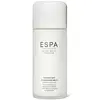What's inside
What's inside
 Key Ingredients
Key Ingredients

No key ingredients
 Benefits
Benefits

 Concerns
Concerns

 Ingredients Side-by-side
Ingredients Side-by-side

Camellia Sinensis Leaf Extract
AntimicrobialWater
Skin ConditioningGlycerin
HumectantDecyl Glucoside
CleansingButylene Glycol
HumectantCocamidopropyl Betaine
CleansingSodium Cocoyl Isethionate
CleansingNiacinamide
SmoothingOryza Sativa Bran Extract
Skin ConditioningZinc PCA
HumectantPolyglyceryl-4 Caprate
EmulsifyingStyrene/Acrylates Copolymer
Sodium Chloride
MaskingSalicylic Acid
MaskingBenzyl Glycol
SolventPyrus Malus Fruit Extract
Skin ConditioningEthylhexylglycerin
Skin ConditioningDisodium EDTA
Hordeum Vulgare Extract
EmollientPropanediol
SolventRaspberry Ketone
MaskingDiospyros Kaki Leaf Extract
Skin ProtectingAllantoin
Skin ConditioningVitis Vinifera Fruit Extract
Skin ConditioningArtemisia Vulgaris Extract
Skin ConditioningGinkgo Biloba Leaf Extract
Skin ConditioningCoffea Arabica Seed Extract
MaskingAlthaea Rosea Root Extract
HumectantCarthamus Tinctorius Flower Extract
Skin ConditioningCastanea Sativa Bark Extract
Skin ConditioningCamellia Sasanqua Extract
Ficus Carica Fruit Extract
Humectant1,2-Hexanediol
Skin ConditioningParfum
MaskingCamellia Sinensis Leaf Extract, Water, Glycerin, Decyl Glucoside, Butylene Glycol, Cocamidopropyl Betaine, Sodium Cocoyl Isethionate, Niacinamide, Oryza Sativa Bran Extract, Zinc PCA, Polyglyceryl-4 Caprate, Styrene/Acrylates Copolymer, Sodium Chloride, Salicylic Acid, Benzyl Glycol, Pyrus Malus Fruit Extract, Ethylhexylglycerin, Disodium EDTA, Hordeum Vulgare Extract, Propanediol, Raspberry Ketone, Diospyros Kaki Leaf Extract, Allantoin, Vitis Vinifera Fruit Extract, Artemisia Vulgaris Extract, Ginkgo Biloba Leaf Extract, Coffea Arabica Seed Extract, Althaea Rosea Root Extract, Carthamus Tinctorius Flower Extract, Castanea Sativa Bark Extract, Camellia Sasanqua Extract, Ficus Carica Fruit Extract, 1,2-Hexanediol, Parfum
Water
Skin ConditioningGlycerin
HumectantGlycine Soja Oil
EmollientPrunus Amygdalus Dulcis Oil
Skin ConditioningStearic Acid
CleansingAlthaea Officinalis Root Extract
Skin ConditioningPhenoxyethanol
PreservativeHydrogenated Ethylhexyl Olivate
EmollientSclerotium Gum
Emulsion StabilisingChamomilla Recutita Flower Extract
MaskingCetearyl Alcohol
EmollientBenzyl Alcohol
PerfumingParfum
MaskingXanthan Gum
EmulsifyingHydrogenated Olive Oil Unsaponifiables
EmollientPelargonium Graveolens Oil
MaskingEthylhexylglycerin
Skin ConditioningStyrax Tonkinensis Resin Extract
PerfumingGeraniol
PerfumingSodium Hydroxide
BufferingLinalool
PerfumingWater, Glycerin, Glycine Soja Oil, Prunus Amygdalus Dulcis Oil, Stearic Acid, Althaea Officinalis Root Extract, Phenoxyethanol, Hydrogenated Ethylhexyl Olivate, Sclerotium Gum, Chamomilla Recutita Flower Extract, Cetearyl Alcohol, Benzyl Alcohol, Parfum, Xanthan Gum, Hydrogenated Olive Oil Unsaponifiables, Pelargonium Graveolens Oil, Ethylhexylglycerin, Styrax Tonkinensis Resin Extract, Geraniol, Sodium Hydroxide, Linalool
Ingredients Explained
These ingredients are found in both products.
Ingredients higher up in an ingredient list are typically present in a larger amount.
Ethylhexylglycerin (we can't pronounce this either) is commonly used as a preservative and skin softener. It is derived from glyceryl.
You might see Ethylhexylglycerin often paired with other preservatives such as phenoxyethanol. Ethylhexylglycerin has been found to increase the effectiveness of these other preservatives.
Glycerin is already naturally found in your skin. It helps moisturize and protect your skin.
A study from 2016 found glycerin to be more effective as a humectant than AHAs and hyaluronic acid.
As a humectant, it helps the skin stay hydrated by pulling moisture to your skin. The low molecular weight of glycerin allows it to pull moisture into the deeper layers of your skin.
Hydrated skin improves your skin barrier; Your skin barrier helps protect against irritants and bacteria.
Glycerin has also been found to have antimicrobial and antiviral properties. Due to these properties, glycerin is often used in wound and burn treatments.
In cosmetics, glycerin is usually derived from plants such as soybean or palm. However, it can also be sourced from animals, such as tallow or animal fat.
This ingredient is organic, colorless, odorless, and non-toxic.
Glycerin is the name for this ingredient in American English. British English uses Glycerol/Glycerine.
Learn more about GlycerinParfum is a catch-all term for an ingredient or more that is used to give a scent to products.
Also called "fragrance", this ingredient can be a blend of hundreds of chemicals or plant oils. This means every product with "fragrance" or "parfum" in the ingredients list is a different mixture.
For instance, Habanolide is a proprietary trade name for a specific aroma chemical. When used as a fragrance ingredient in cosmetics, most aroma chemicals fall under the broad labeling category of “FRAGRANCE” or “PARFUM” according to EU and US regulations.
The term 'parfum' or 'fragrance' is not regulated in many countries. In many cases, it is up to the brand to define this term.
For instance, many brands choose to label themselves as "fragrance-free" because they are not using synthetic fragrances. However, their products may still contain ingredients such as essential oils that are considered a fragrance by INCI standards.
One example is Calendula flower extract. Calendula is an essential oil that still imparts a scent or 'fragrance'.
Depending on the blend, the ingredients in the mixture can cause allergies and sensitivities on the skin. Some ingredients that are known EU allergens include linalool and citronellol.
Parfum can also be used to mask or cover an unpleasant scent.
The bottom line is: not all fragrances/parfum/ingredients are created equally. If you are worried about fragrances, we recommend taking a closer look at an ingredient. And of course, we always recommend speaking with a professional.
Learn more about ParfumWater. It's the most common cosmetic ingredient of all. You'll usually see it at the top of ingredient lists, meaning that it makes up the largest part of the product.
So why is it so popular? Water most often acts as a solvent - this means that it helps dissolve other ingredients into the formulation.
You'll also recognize water as that liquid we all need to stay alive. If you see this, drink a glass of water. Stay hydrated!
Learn more about Water